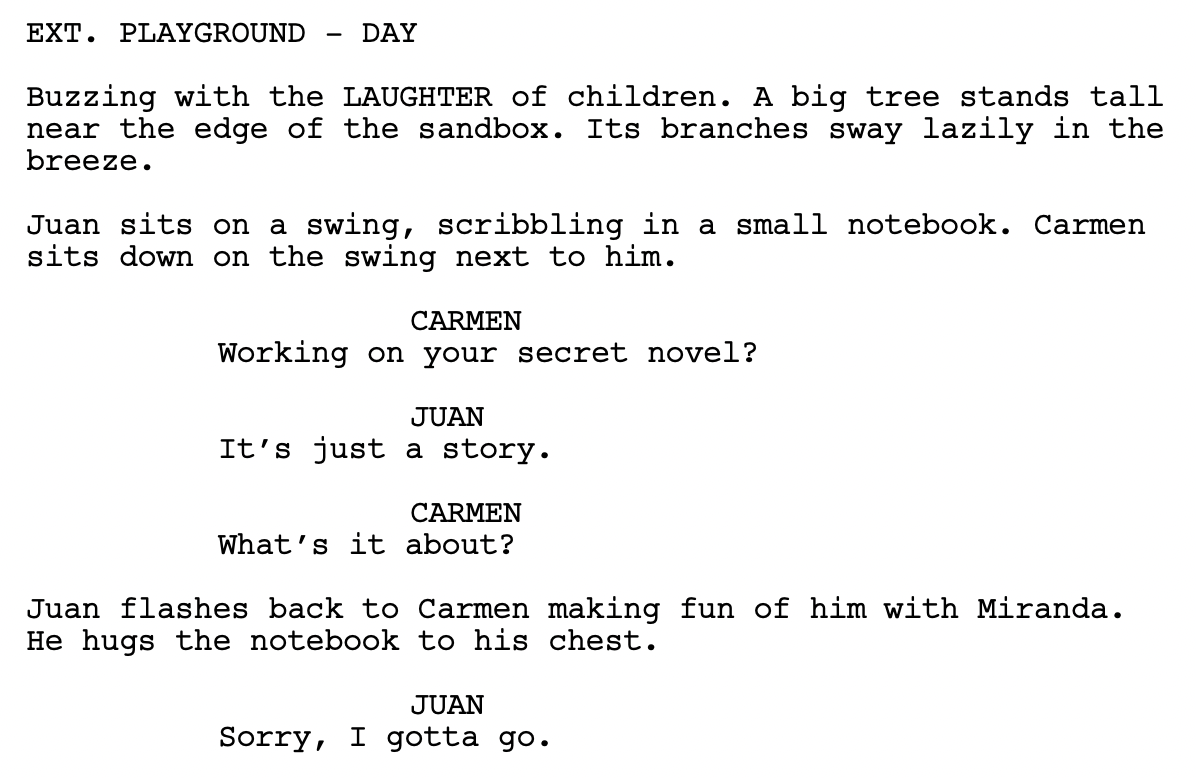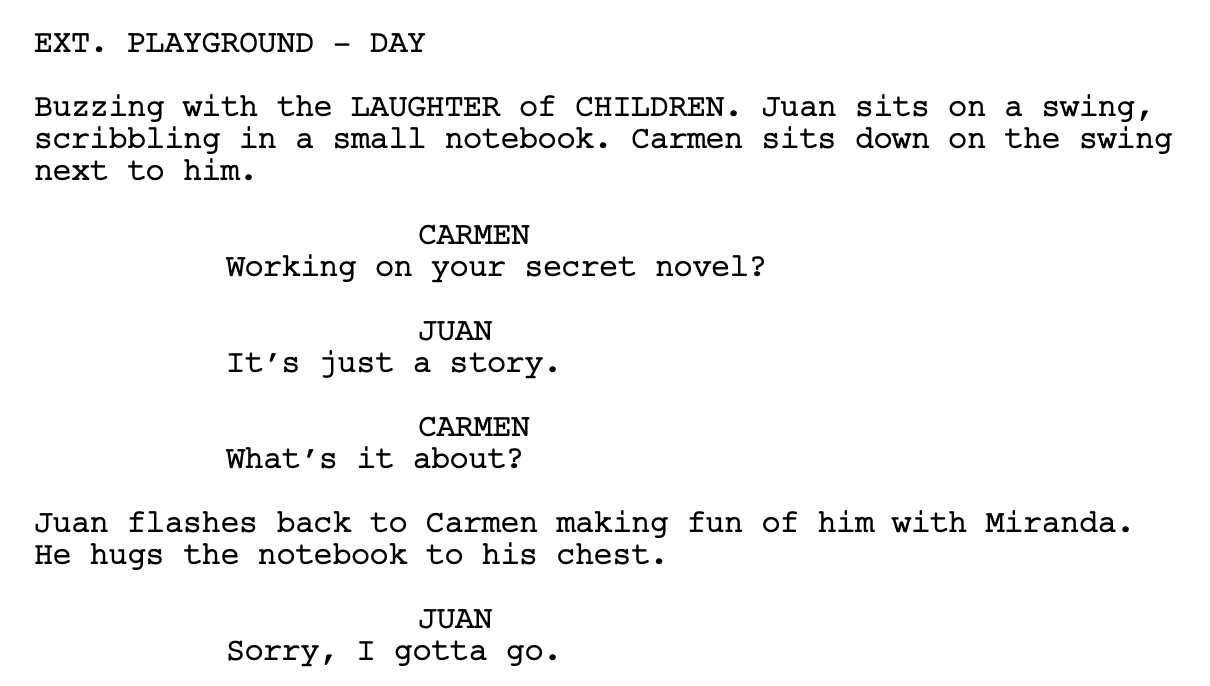Fix This - 3.30.25
Good writing is the foundation of a good story. A reader can tell on the very first page if you're a strong writer. Spotting places to improve your own work can be tricky. Practice here first!
What would you change about the excerpt below?
The first mistake is an easy one to fix. The writer has done a good job remembering to put “laughter” in all caps because it’s a sound effect. They forgot, however, that “children” also needs to be in all caps. Even though those kids are just extras, casting will need to fill those roles. Any time we see people for the first time—even if they’re in the background—put them in all caps.
What else would you change?
The next one is tricky, and we don’t expect you to have gotten it right away without reading the whole script. We’re pointing it out so you can check your own writing for the same mistake. See that sentence about the tree? It’s lovely, right? Paints a nice picture in your head. It also has absolutely nothing to do with the scene… or with the story in the rest of the script. So, even though it’s vivd, it’s irrelevant. As the writer, you’d have the option to trim it to make room for other (more relevant) details somewhere else in your screenplay.
We know this is a tough one because you want to tell your reader what you see in your head. But you’re also telling the locations manager they need to find a playground with a tree next to the sandbox. If it’s not important for your story, do they really need to do that?
Our decision here was to take out the part that doesn’t matter.
The next problem is “sits” is repetitive. Juan sits, Carmen sits down. Hmmm, not great.
Not only that, but “sits” is one of our 7 Deadly Sins of Writing, meaning there’s often a more descriptive word you can use in place. Here, we replaced the second instance with something better.
One more mistake to go, and it’s the biggest one in this excerpt…
The way it is now, Juan’s flashback is in his head. Things that happen in a character’s head don’t work in a script unless you find a way to put them on the screen. In other words, the flashback needs to be written as its own scene. This is so the director, cast, and crew know how and where to film it.
There are multiple ways to format flashbacks in a script. The most important thing is that you pick one clear way and do it that way every time. Here’s what we recommend…
There you go! Now the flashback has been written into the story.
Check your work to see if you’ve made any of these mistakes in your script. If you have, fix them!
For more in-depth writing advice and a comprehensive strategy for taking your movie from the seed of an idea to a stellar draft, sign up for Screenwriting Essentials. We’ll teach you everything you need to know to write a standout script.





